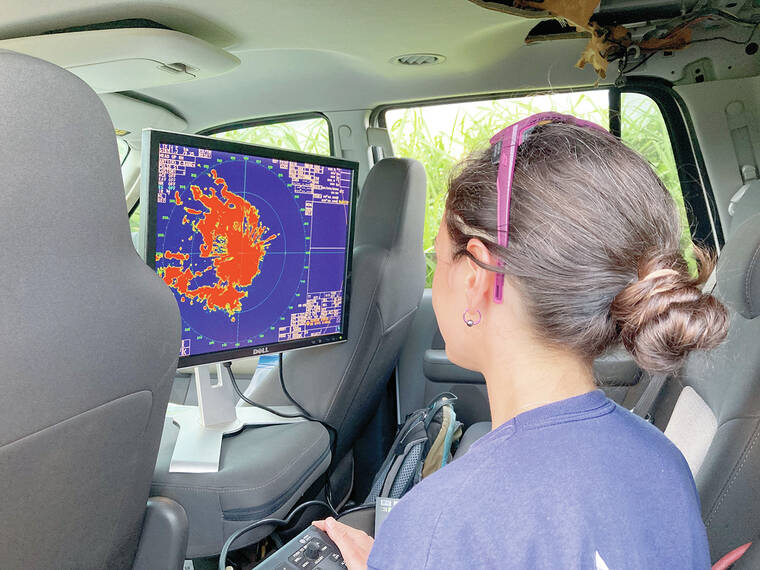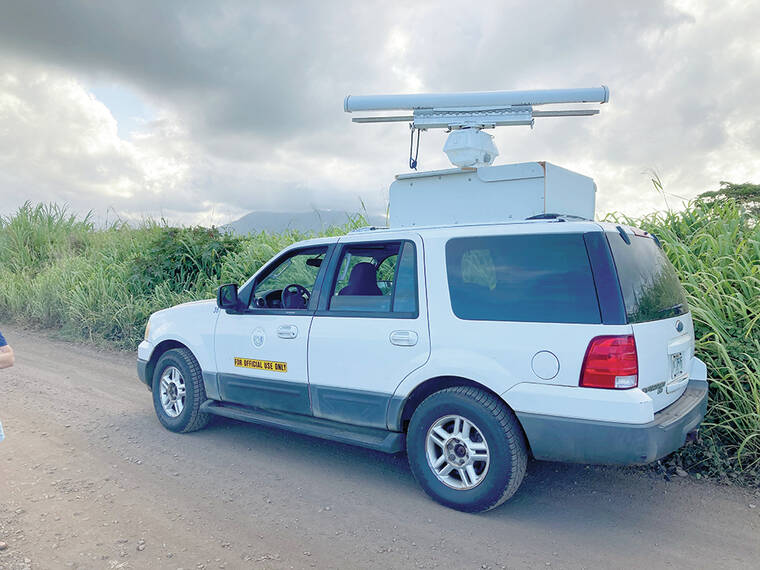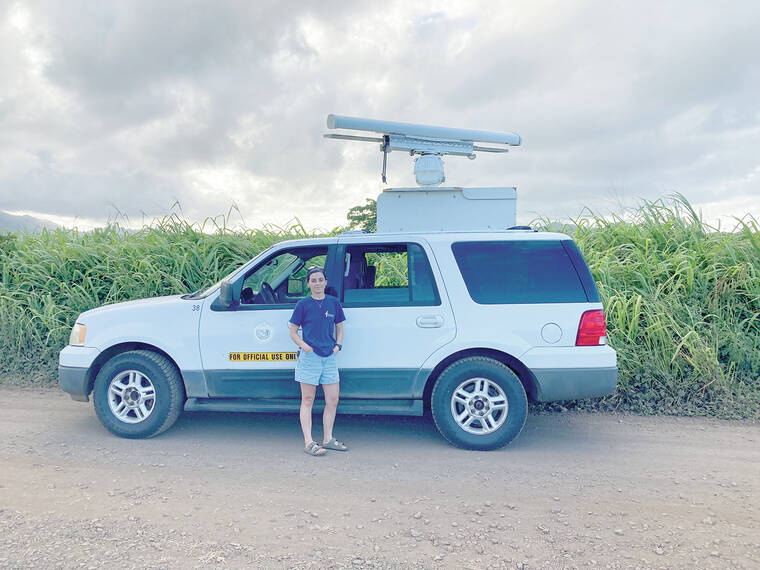Biologist uses radar to monitor ‘a‘o and ua‘u populations



KEALIA — Purple dots can be insects, parakeets, planes or cars. But the important ones are endangered Kaua‘i seabirds returning to land after a day at sea.
Seabird biologist Dilek Sahin is spending her nights on roadsides across the island, using a mobile radar lab to collect data on local ‘a‘o (Newell’s shearater, Puffinus newelli) and ua‘u (Hawaiian petrel, Pterodroma sandwichensis) populations.
Both species aren’t tiny: The ‘a‘o and ua‘u have about three-foot wingspans, respectively, according to the U.S. Fish and Wildlife Service.
But when night falls and darkness renders the birds invisible to the naked eye, they only appear as purple dots on Sahin’s radar monitor.
It’s up to her to identify them, using cues that separate the ‘a‘o and ua‘u from other objects within the radar’s 1.5 kilometer range.
“The radar is even picking the insects up,” Sahin said Wednesday while parked along a dirt road near Kealia Beach.
“Basically anything that transmits a signal back — small raindrops, for example. When it’s rainy, we are not operating the radar.”
Sahin is working on behalf of the Kaua‘i Endangered Seabird Recovery Project, which has used radar to monitor ‘a‘o and ua‘u populations since 2006. Operations began in 1993, under project originators Robert Day and Brian Cooper of ABR Inc.
KESRP’s mobile radar lab is proof necessity is the mother of invention: It’s an SUV with a marine radar bolted to the roof.
State Department of Land and Natural Resources Division of Forestry and Wildlife personnel installed the radar onto a plywood box containing two car batteries, which power the device.
An attached computer system is powered by a small generator, which Sahin sets up near the parked vehicle.
Long-term data collected under the project has revealed a massive decline in both ‘a‘o and ua‘o populations on Kaua‘i.
The local ‘a‘o population declined by 94% between 1993 and 2013, according to the KESRP website. The ua‘u population declined by 78% over the same period of time.
The species’ colonies are now mostly relegated to the island’s remote Napali Coast, which is relatively inaccessible to predators like rats and cats.
However, researchers find these areas inaccessible, too.
Sahin calls it one of the biggest challenges in seabird conservation. And it’s why researchers rely on radar.
“This is an easy method you can really standardize, regardless of how many people you have … you can just go drive and monitor all the same sites throughout a long period of years,” she said.
The KESRP mobile radar lab visits 15 sites across Kaua‘i from late May to mid-July each year, when parent ‘a‘o and ua‘u return to the island each night to feed their young or incubate eggs.
The more-active sites on the North Shore are surveyed repeatedly each season. Less active sites, like Kealia, may only be surveyed once per season.
Sahin’s radar spun for two hours at Kealia Beach Wednesday night.
“I probably recorded close to 100 targets,” she said on Thursday.
Sahin identifies her seabird targets by time-of-day, speed and direction.
“When I see a target and I’m sure it’s a seabird, I define its heading,” she said.
“Where is it heading to?”
Sahin may be concerned with individual birds when seated in the mobile radar lab. But, eventually, the data she collects will show where the ‘a‘o and ua‘u species are headed as a whole.
•••
Scott Yunker, reporter, can be reached at 245-0437 or syunker@thegardenisland.com.
